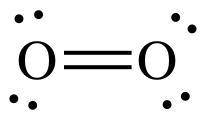
Chemistry, 05.05.2020 20:41 emblemhacks
Draw all of the Lewis structures of O2 which obey the octet rule and use this Lewis structure or these resonance structures to predict how many covalent bonds connect each oxygen atom in the real structure to the central O atom. Assume that the octet rule is followed for the O atom when you draw your structure(s). Pick the correct statement from the choices below. a) Each oxygen atom is connected to the central O atom with 1.67 covalent bonds. b) Each oxygen atom is connected to the central O atom with 1.33 covalent bonds. c) Each oxygen atom is connected to the central O atom with 2 covalent bonds. d) Each oxygen atom is connected to the central O atom with 1.5 covalent bonds. e) Each oxygen atom is connected to the central O atom with 1.25 covalent bonds.

Answers: 1


Another question on Chemistry

Chemistry, 22.06.2019 01:30
Quickly! brainliest if two people answer! 1. the blood has red blood cells, white blood cells and platelets. red blood cells carry oxygen to other cells in the body. cells need oxygen to live. white blood cells destroy certain germs. they protect our bodies from disease. which question is answered in this paragraph? (a) what is the role of blood vessels? (b) what type of cells are attached to bones? (c) what type of blood cell to clot your blood? (d) what are the different types of blood cells? 2. which sentence from the section "stem cells" best explains the role of stem cells? (a) when one kind of cell stops working, stem cells can . (b) they can turn into that cell and take its place. (c) scientists are studying new ways to use stem cells. (d) these cells can people heal faster. 3. read the selection from the section "nerve cells." nerve cells send messages to the rest of our bodies. these messages move between the brain, spinal cord and various organs. nerve cells are also called neurons. fill in the blank. a "neuron" is a (a) cell that moves information from the brain to other parts of the body (b) stem cell that has both an axon and a dendrite (c) cell that controls the fingers of a body (d) cell that makes up the spinal cord 4. some muscles in our body move without us telling them to. these are called involuntary muscles. some examples are the cardiac muscle cells inside the heart. these cells the heart relax and fill with blood. what is the best definition of "involuntary" based on the context clues? (a) something that happens on its own (b) trying hard to do something (c) something moving back and forth (d) easily moved
Answers: 2

Chemistry, 22.06.2019 10:30
Which of these is not an example of chemical weathering? a. iron-rich mineral rusting b. feldspar turning into clay c. limestone reacting with acid d. granite breaking up into sand
Answers: 1

Chemistry, 23.06.2019 02:30
When the ionic compound nabr dissolves in water, br– ions are pulled into solution by the attraction between what two particles? a. the na+ and br– ions b. the na+ ion and the negative end of a water molecule c. the br– ion and the positive end of a water molecule d. the br– ion and the negative end of a water molecule
Answers: 1

Chemistry, 23.06.2019 14:30
The atomic number of an element is based on the number of electrons around its core mass of its nucleus number of protons in its nucleus number of neutrons in its nucleus
Answers: 2
You know the right answer?
Draw all of the Lewis structures of O2 which obey the octet rule and use this Lewis structure or the...
Questions

English, 13.02.2020 23:03

English, 13.02.2020 23:03

Mathematics, 13.02.2020 23:03

Social Studies, 13.02.2020 23:03

Mathematics, 13.02.2020 23:03

History, 13.02.2020 23:03









Social Studies, 13.02.2020 23:03


Mathematics, 13.02.2020 23:03






